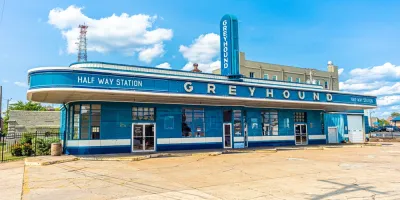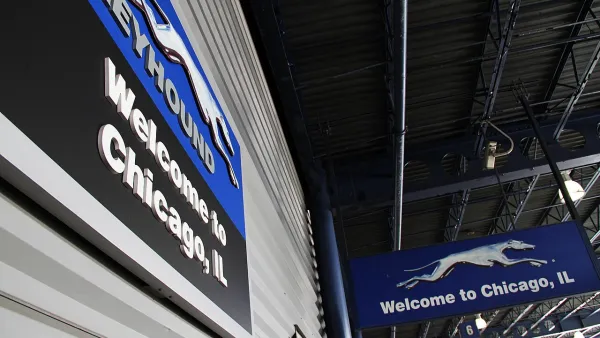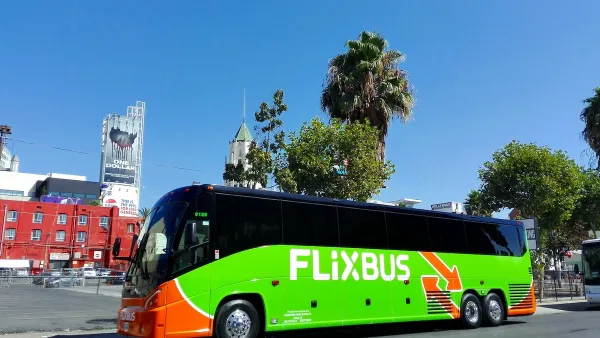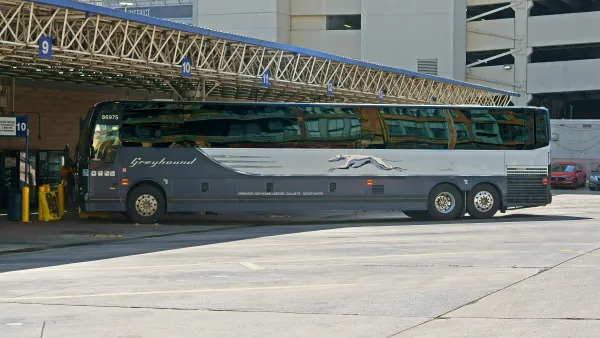The closure of many former Greyhound bus terminals is making intercity bus travel more inconvenient for the riders who depend on it.

Intercity bus riders are seeing a loss of dedicated bus stations and amenities. As Dan Zukowski explains in Smart Cities Dive, “After FlixMobility acquired Greyhound in October 2021, Greyhound’s former owner, FirstGroup, began selling the bus company’s real estate holdings, including its privately owned bus stations.”
Now, with many former Greyhound stations closing, bus passengers often have to wait on public sidewalks without amenities like public restrooms or air-conditioned waiting rooms. According to Joe Schwieterman, director of the Chaddick Institute for Metropolitan Development at DePaul University, “You have lots of disadvantaged populations that really suffer when indoor waiting rooms are lost, or you end up [with stops] at convenience stores and hours are limited.”
Some cities provide access to existing facilities, such as Union Station in downtown Los Angeles, but, according to an annual report on the intercity bus industry from the Chaddick Institute, “The problems this creates have yet to attract much attention from local policymakers, some of whom have done little to help travelers on intercity buses in the past.”
The report warns that the closures, along with an ongoing operator shortage, will prevent bus companies from improving services and bringing ridership back up to pre-pandemic levels. It also predicts a rise in premium services such as onboard meals and lie-flat beds to attract a wider variety of passengers.
FULL STORY: Intercity bus station closures create problems for riders

National Parks Layoffs Will Cause Communities to Lose Billions
Thousands of essential park workers were laid off this week, just before the busy spring break season.

Retro-silient?: America’s First “Eco-burb,” The Woodlands Turns 50
A master-planned community north of Houston offers lessons on green infrastructure and resilient design, but falls short of its founder’s lofty affordability and walkability goals.

Delivering for America Plan Will Downgrade Mail Service in at Least 49.5 Percent of Zip Codes
Republican and Democrat lawmakers criticize the plan for its disproportionate negative impact on rural communities.

Test News Post 1
This is a summary

Test News Headline 46
Test for the image on the front page.

Balancing Bombs and Butterflies: How the National Guard Protects a Rare Species
The National Guard at Fort Indiantown Gap uses GIS technology and land management strategies to balance military training with conservation efforts, ensuring the survival of the rare eastern regal fritillary butterfly.
Urban Design for Planners 1: Software Tools
This six-course series explores essential urban design concepts using open source software and equips planners with the tools they need to participate fully in the urban design process.
Planning for Universal Design
Learn the tools for implementing Universal Design in planning regulations.
EMC Planning Group, Inc.
Planetizen
Planetizen
Mpact (formerly Rail~Volution)
Great Falls Development Authority, Inc.
HUDs Office of Policy Development and Research
NYU Wagner Graduate School of Public Service





























